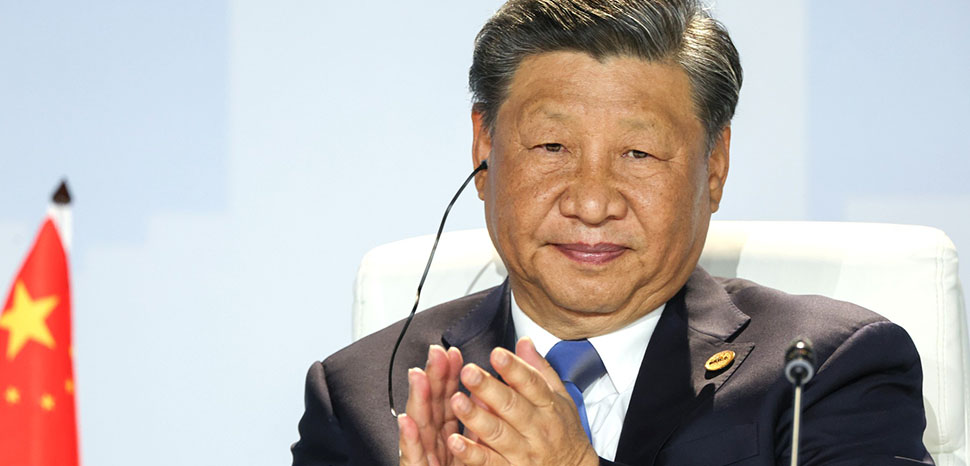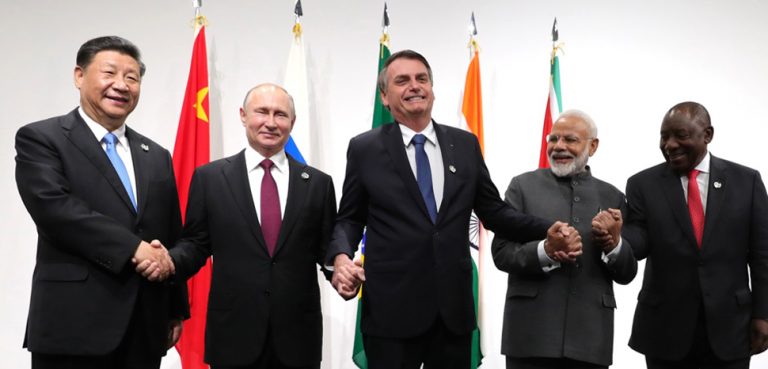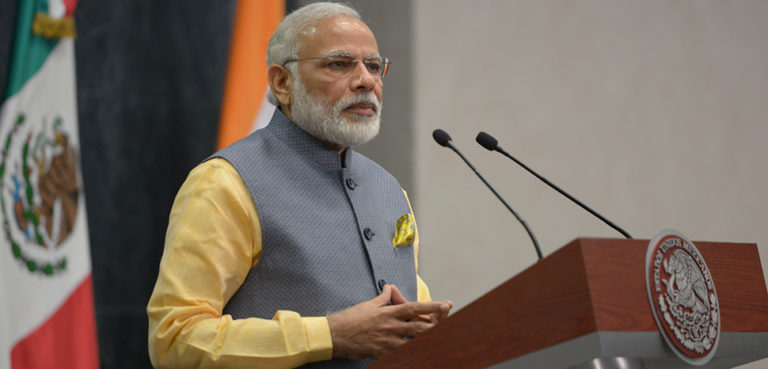The emergent interconnections between China and key Latin American states, such as Brazil, Argentina, and Venezuela, signify a substantial realignment in international geopolitics. Far from being simple economic partnerships or cursory diplomatic liaisons, these affiliations are profoundly strategic, shaped by a myriad of influences. These include not only economic imperatives and trading advantages, but also political congruities, cultural diplomacy efforts, and overarching geopolitical designs.
In this intricate landscape, international groupings like BRICS (Brazil, Russia, India, China, and South Africa) take on increased importance. Originally formulated as an economic bloc, BRICS has metamorphosed into a wider arena for geopolitical discourse and strategic collaboration. The recent proposition to expand BRICS by incorporating Argentina, among other countries, adds a further dimension of intricacy and import to the Sino-Latin American relationship. This development could act as a propellant for augmented involvement but also provokes fresh queries regarding regional power equilibrium, economic interdependencies, and the breadth of multilateral collaboration.
Given the expanding role of BRICS and China’s ascending clout in Latin America, there is a pressing need for a sophisticated comprehension of these alliances. Such a need encourages a reevaluation of longstanding models of international relations and prompts inquiry into novel conceptual frameworks to decipher global power dynamics. The intent of this essay is to scrutinize these multifaceted relationships across their economic, political, and cultural facets, all set against the backdrop of the evolving BRICS grouping.
Economic Dimensions: Opportunities, Challenges, and the Shadow of Dependency
The surge of economic interaction between China and Latin America has inaugurated a novel arena of possibilities for the latter, substantially transforming its economic fabric. Immediate advantages are manifest in capital inflows and enlarged market opportunities for Latin American commodities and services. Sectors as diverse as infrastructure, technology, agriculture, and natural resources have been beneficiaries of Chinese capital, serving as catalysts for economic advancement.
Yet this financial entanglement is fraught with intricacies and potential pitfalls. The relationship acts as a Janus-faced entity: it furnishes instant economic uplift and developmental avenues, but simultaneously arouses pressing questions about sustained economic reliance and possible debt vulnerabilities. Chinese capital often arrives in the guise of conditional loans or investments, thereby engendering financially precarious conditions for some states in the region. These circumstances fuel rising qualms about the durability and ethical dimensions of these economic bonds.
Adding to this complexity is the prospective enlargement of the BRICS coalition. The potential induction of Argentina into the bloc could generate bifurcated consequences on regional economic frailties. On the upside, Argentina could leverage a unified negotiating position within the BRICS structure, potentially benefiting not only itself but also other Latin American states in dealings with China. Such a position could facilitate improved trade conditions, investment stipulations, and even options for debt reconfiguration.
Conversely, there are latent drawbacks. Argentina’s incorporation into BRICS may magnify China’s economic clout in Latin America, thereby compromising the economic self-determination of individual nations. China could exploit BRICS’ collective bargaining capacity to further its own geopolitical agenda, perhaps to the detriment of individual member states. This compels us to consider the enduring ramifications of BRICS membership for economic sovereignty in Latin America.
Political Dynamics: Sovereignty, Geopolitical Leverage, and the BRICS Factor
The political dimensions of the relationships between China and key Latin American nations are far from superficial; they are deeply entrenched in a complex architecture of bilateral and multilateral agreements. These agreements serve as more than mere formalities; they act as the scaffolding upon which a broader cooperative agenda is constructed. This agenda encompasses a wide range of issues, from governance and human rights to regional security and environmental sustainability. These formal mechanisms, therefore, have substantive implications that extend beyond the immediate parties involved to influence regional stability and even the contours of global geopolitics.
However, the political dynamics of these relationships are fraught with complexities that raise intricate questions about national sovereignty and geopolitical leverage. The agreements often involve commitments that could impinge upon national policymaking, thereby raising concerns about the erosion of sovereignty. Moreover, the geopolitical leverage that individual Latin American countries might exercise in their relationship with China could be subject to shifts due to broader geopolitical currents.
One such current is the evolving dynamics within the BRICS coalition. The potential inclusion of Argentina into this coalition adds a new layer of complexity to the existing relationships. For instance, Brazil, as a founding member of BRICS, stands at a particularly interesting juncture. The inclusion of Argentina could either enhance or diminish Brazil’s geopolitical leverage within the coalition and, by extension, its bargaining power with China. On one hand, the inclusion of another Latin American country could amplify the region’s voice within BRICS, thereby strengthening Brazil’s position. On the other hand, the addition of a new member could dilute Brazil’s influence, especially if Argentina’s policy priorities diverge significantly from those of Brazil.
Furthermore, the recalibration of the balance of power within BRICS could have ripple effects that extend beyond the immediate coalition. It could influence how Latin American countries position themselves not just with respect to China but also in the broader international arena, affecting alliances, trade agreements, and even voting behavior in international organizations.
Cultural Diplomacy: The Soft Power Equation
China’s soft power initiatives in Latin America are not merely ancillary elements of its foreign policy; they are, in fact, central pillars of its broader strategic objectives. These initiatives are carefully calibrated to serve multiple purposes, from image-building to the deepening of diplomatic ties. Through a diverse array of cultural exchanges, such as art exhibitions, musical performances, and culinary events, China is meticulously crafting a more nuanced and favorable image of itself in the Latin American public sphere. These cultural initiatives are often accompanied by media partnerships that aim to reshape the narrative surrounding China, thereby influencing public opinion in a manner that is conducive to its diplomatic and strategic goals.
Moreover, educational programs and academic exchanges form another crucial aspect of China’s soft power strategy. These programs serve not only to facilitate knowledge transfer but also to cultivate a new generation of Latin American leaders and scholars who possess a nuanced understanding of China. This long-term investment in education has the potential to yield dividends in the form of future policy decisions that are more aligned with China’s interests.
The implications of these soft power initiatives are far-reaching, extending beyond the realm of public opinion to influence the broader diplomatic landscape. They have the potential to affect policy decisions at the national level and even recalibrate international alignments. For instance, a more favorable public opinion towards China could make it politically easier for Latin American governments to enter into agreements or alliances that are more favorable to Chinese interests.
The role of soft power in China’s Latin America strategy becomes even more critical when viewed through the lens of the BRICS enlargement. The potential inclusion of Argentina into this coalition provides China with a multilateral platform to amplify its cultural diplomacy efforts. Within the BRICS framework, cultural diplomacy could serve as a tool for consensus-building and for fostering a sense of shared values and objectives among member states. This could, in turn, facilitate more coordinated stances on global issues, thereby enhancing the coalition’s collective bargaining power on the international stage.
The U.S. Conundrum: Reassessing Regional Influence
For an extended period, the United States has regarded Latin America as its ‘Patio Trasero’ or backyard, a viewpoint that has significantly informed its diplomatic, economic, and security relations with countries to its south. Yet, China’s expanding footprint in the region introduces novel complexities that necessitate a reevaluation of U.S. policy approaches. This is more than a question of economic rivalry; it is a multi-dimensional geopolitical calculus that involves shifts in political allegiances, economic ties, and cultural outreach.
China’s ascending role in Latin America calls for a sophisticated reshaping of U.S. policies in the area. Such a reshaping should be multi-layered, recognizing the comprehensive manner in which China engages with Latin American states. While the U.S. has conventionally emphasized economic assistance and security collaborations, China’s strategy has been more encompassing. It includes not merely economic ventures but also political affiliations and cultural programs, making China an increasingly appealing partner for Latin American nations and thereby contesting the U.S.’s traditional sway.
The possible augmentation of the BRICS, notably with Argentina’s prospective inclusion, acts as an accelerant in this process of policy reevaluation. The BRICS structure furnishes China with a multilateral venue to fortify its clout in Latin America, thereby amplifying its geopolitical leverage. Such a development may force the United States to reconsider its regional approaches in the context of a possibly emboldened Sino-Latin American axis within the BRICS framework. For example, the U.S. might have to explore more proactive tactics, ranging from heightened economic inducements and rejuvenated diplomatic overtures to cooperative multilateral ventures aimed at counterbalancing China’s ascendancy.
Furthermore, this policy adaptation must occur alongside the U.S.’s other global obligations and challenges, including its ongoing strategic rivalry with China across various domains. This elevates the task of reorienting its Latin American strategy from a regional concern to an integral facet of its wider foreign policy matrix.
Future Trajectory: A Microcosm for Global Shifts
The emerging ties between China and key Latin American nations, including Brazil, Argentina, and Venezuela, serve not as isolated phenomena but potentially as microcosms of broader shifts in global geopolitics. These ties are complex, spanning economic, political, and cultural spheres, and are driven by numerous factors that go beyond mere bilateral interactions. One such key element is the evolving nature of the BRICS, particularly with the potential inclusion of Argentina. This addition may signal a transformative moment in world affairs, punctuated by fluid alliances, realigned power structures, and dynamic geopolitical tactics.
The multifaceted nature of Sino-Latin American engagements demands careful analysis, both in scholarly research and policy formulation. From an economic perspective, these relationships offer valuable case studies for deciphering the intricate realities of global trade and capital flows, particularly relevant for emerging economies. Politically, they illuminate the intricacies of diplomatic liaisons and alliance formation among states with different governance paradigms and geopolitical ambitions. Culturally, they provide an opportunity to assess the effectiveness of soft power maneuvers in influencing public opinion and interstate relations.
Moreover, the potential shifts within the BRICS grouping introduce an additional layer of complexity. Argentina’s membership could alter the balance of power within the group, thereby affecting its collective bargaining power on the world stage. Such a shift could have cascading effects that not only affect Sino-Latin American relations, but also alter the broader geopolitical tableau, including the strategic approaches of other major actors such as the United States and the European Union.
Because of these intricate dynamics and high stakes, the evolving China-Latin America relationship warrants focused attention in academic discourse and policy strategy. Understanding their complex dimensions is essential given the far-reaching implications these ties could have for regional equilibrium, global power configurations, and future international cooperation frameworks. In a volatile and evolving global context, Sino-Latin American relations can serve as both an indicator and an instigator of broader systemic changes in the international order.
Conclusion
In conclusion, the intricate and evolving relationships between China and significant Latin American states, notably Brazil, Argentina, and Venezuela, mark a decisive shift in the global geopolitical milieu. These bonds extend beyond mere economic or transactional dimensions to constitute strategic alliances, shaped by an intricate interplay of economic needs, political alignments, cultural diplomacy, and overarching geopolitical objectives. The potential inclusion of Argentina in the BRICS coalition introduces an added layer of intricacy to this already complex global equation.
The necessity to comprehend the multiple facets of these interactions extends beyond academic theorization; it is an urgent task with profound repercussions for regional stability, global power hierarchies, and the future blueprint of international collaboration. In a world grappling with complex and increasingly multipolar geopolitical dynamics, these alliances merit priority in both scholarly discussions and policy deliberations. They offer vital clues to the mechanisms of alliance formation, the potential of soft power strategies, and the convolutions of economic engagement among ascending economies.
Moreover, the Sino-Latin American relations act as a barometer for BRICS’ shifting role in global governance structures. The likely expansion of this coalition could rebalance power configurations, not just within the group but also on a wider international stage. Hence, the relationships forming the China-Latin America axis are of critical importance, deserving continuous scrutiny and in-depth analysis from academics, policy architects, and global institutions.
Given the intricate stakes and complexities involved, a comprehensive, multidisciplinary methodology is warranted for examining these relationships. Various academic disciplines—including economics, political science, international relations, and cultural studies—should be employed to offer a nuanced understanding. As the global community navigates through a multifaceted and increasingly decentralized geopolitical terrain, the dynamic interrelations between China and Latin America may function as both an indicator and a catalyst for larger transformations in the world order.




